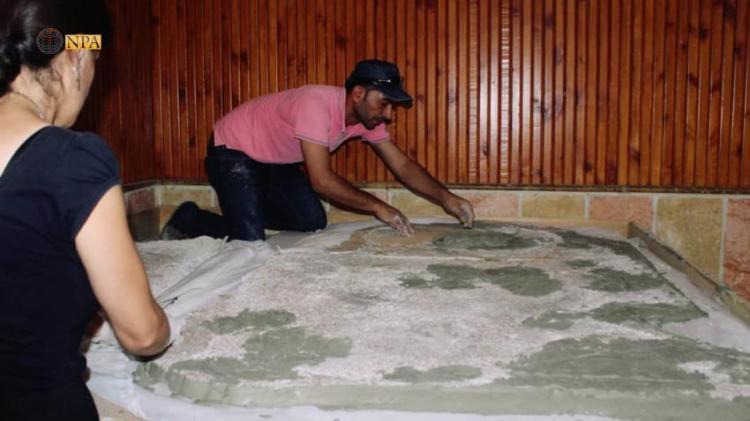The maintenance of mosaic pieces extracted from an archaeological site in northern Syria
Qamishli – North-Press Agency
Abbas Mousa
The Directorate of Antiquities in Qamishli, in northeastern Syria, has completed on Saturday the maintenance and restoration of 83 pieces of mosaic extracted from an archaeological site in the village Shuyukh Tahtani, west of the city of Kobani, northern Syria, after being brought to Al-Jazira region (administrative division comprising several areas) amid the Turkish ongoing threats of invading the region.
The directorate has indicated that the works of restoration, maintenance, and conservation were all made by international experts, as Amer Ahmed, the director of antiquities in Al-Jazira region confirmed to North-Press that the plates were in a location opposite to the positions of the Euphrates Shield militias and that it was brought into Qamishli amid fears of being encroached on.
Moreover, Ahmed added that it was not the first time that they have repaired this kind of mosaic plates, as many had been repaired in the past, but the transport process had affected them, necessitating their restoration and maintenance.
The director of Antiquities in al-Jazira region pointed out that the site was exposed to secret excavation and dredging operations during the control of the Islamic State militant over the area.
The village of Shuyukh Tahtani is located of about 41 km west of the city of Kobani, as its hill is considered an important archaeological site in the area, an Italian mission had conducted excavation operations there, revealing many archaeological discoveries, of which the most important were, the Roman bathroom, the archaeological monument, and the cuneiform symbols.

